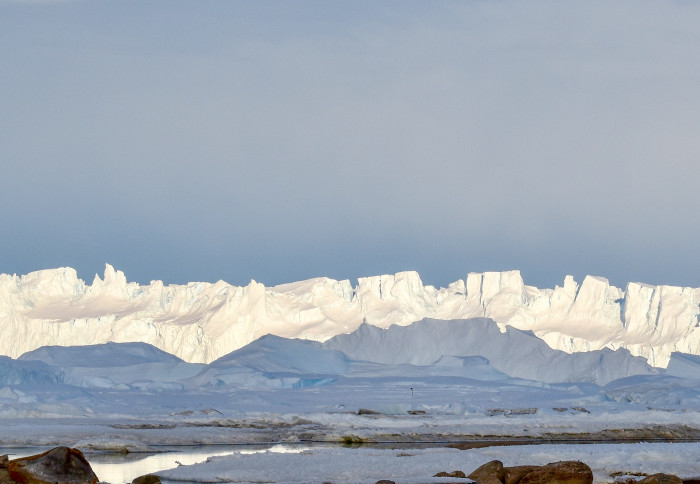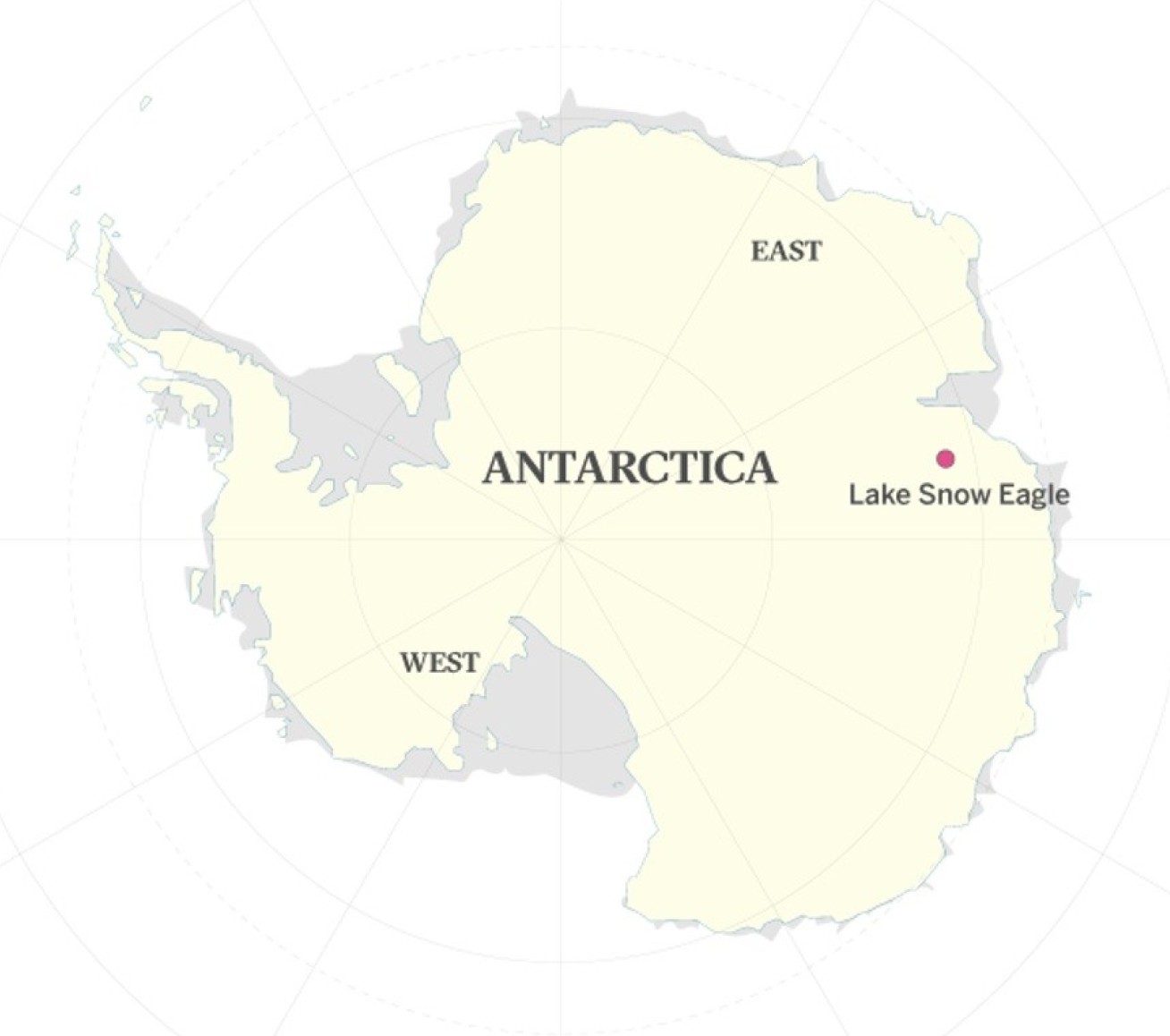
The coast of Antarctica’s Princess Elizabeth, near where the ice sheet meets the sea.

A lake the size of Las Vegas could help understand the impact of changing climate on Antarctica 10,000 years ago, and in the future.
Scientists investigating the underside of the world’s largest ice sheet in East Antarctica have discovered a lake the size of Las Vegas whose sediments might contain a history of the ice sheet since its earliest beginnings.
They say it would answer questions about what Antarctica was like before it froze, how climate change has affected it over its history, and how the ice sheet might behave as the world warms.
Revealed by heavily instrumented polar research aircraft, Lake Snow Eagle is covered by over 3 kilometres (2 miles) of ice and lies in a canyon in the highlands of Antarctica’s Princess Elizabeth Land, a around 500 kilometres from the edge of the ice shelf.

The discovery of the lake has been announced in a study appearing in the journal Geology, led by scientists at the University of Texas at Austin and including Martin Siegert, Professor of Glaciology and co-director of the Grantham Institute - Climate Change and the Environment, at Imperial College London.
"This lake is likely to have a record of the entire history of the East Antarctic Ice Sheet, its initiation over 34 million years ago, as well as its growth and evolution across glacial cycles since then," said Dr Don Blankenship, one of the paper's authors and a senior research scientist at The University of Texas at Austin’s Institute for Geophysics.
"Our observations also suggest that the ice sheet changed significantly about 10,000 years ago, although we have no idea why," he continued.
Because it lies relatively close to the coast, researchers think that Lake Snow Eagle might contain information about how the East Antarctic Ice Sheet first began and the part played by the Antarctic Circumpolar Current, a ring of cold water circling the continent that scientists think is responsible for keeping it cool.
The first hint that the lake and its host canyon existed emerged when scientists spotted a smooth depression on satellite images of the ice sheet. To confirm it was there, researchers spent three years flying systematic surveys over the site with ice penetrating radar and sensors that measure minute changes in Earth’s gravity and magnetic field.
"I literally jumped when I first saw that bright radar reflection," said the paper's lead author, Shuai Yan, a graduate student at UT Austin's Jackson School of Geosciences who was flight planner for the field research that investigated the lake.
What he saw was the lake's water that, unlike ice, reflects radar like a mirror. Along with the gravity and magnetic surveys, which lit up the underlying geology of the region and the depth of water and sediments, Mr Yan constructed a detailed picture of a jagged, highland topography with Lake Snow Eagle nestled at the base of a canyon.
The newly discovered lake is about 42 kilometres long, 15 kilometres wide and 150-200 metres deep. The sediments at the bottom of the lake are 200-300 metres deep and might include river sediments older than the ice sheet itself.
Moving forward, the researchers said getting a sample of the lake's sediments by drilling into it would fill big gaps in scientists' understanding of Antarctica's glaciation and provide vital information about the ice sheet's possible demise from climate change.

Professor Martin Siegert from Imperial College London, a co-author of the study, said: "This lake's been accumulating sediment over a very long time, potentially taking us through the period when Antarctica had no ice at all, to when it went into deep freeze.
"We don’t have a single record of all those events in one place, but the sediments at the bottom of this lake could be ideal," he said.
Lake Snow Eagle was named after one of the aircraft used in its discovery. It is one of many features uncovered by ICECAP-2, an international collaboration to map the last unknown regions of East Antarctica by polar research teams from the United States, United Kingdom, China, Australia, Brazil and India.
The team for this paper included scientists from UTIG, Scripps Institute for Oceanography, Imperial College London, the Australian Antarctic Division, and the Polar Research Institute of China. The research was supported by the G. Unger Vetlesen Foundation and funded by governments and institutions of the countries involved.
Reference
"A newly discovered subglacial lake in East Antarctica likely hosts a valuable sedimentary record of ice and climate change" is published in Geology, DOI: https://doi.org/10.1130/G50009.1
--
Original content reproduced with permission from University of Texas at Austin.
Top image: The coast of Antarctica’s Princess Elizabeth, near where the ice sheet meets the sea. Newly discovered Lake Snow Eagle lies a few hundred miles inland, under the same ice sheet. Credit: Shuai Yan/UT Jackson School of Geosciences.
Article text (excluding photos or graphics) © Imperial College London.
Photos and graphics subject to third party copyright used with permission or © Imperial College London.
Reporter
Simon Levey
Communications Division

Contact details
Email: s.levey@imperial.ac.uk
Show all stories by this author
Leave a comment
Your comment may be published, displaying your name as you provide it, unless you request otherwise. Your contact details will never be published.




Comments
Comments are loading...